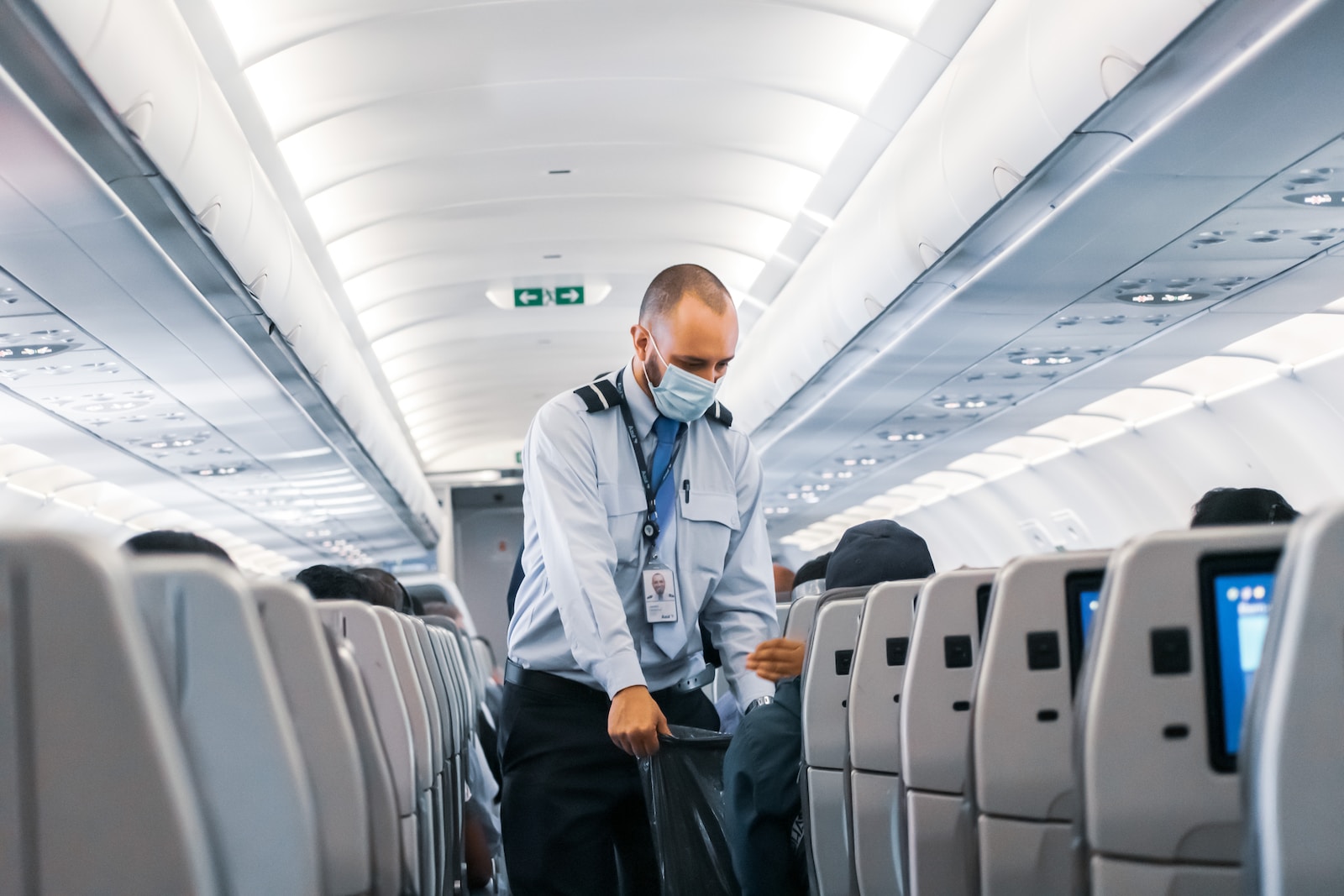Last Updated on: 22nd November 2023, 06:00 pm
Becoming a flight attendant or cabin crew member is a dream job for many people who love to travel and work in a dynamic environment. However, it takes more than just a passion for travel and a friendly personality to become a successful cabin crew member. Airlines have strict requirements and expectations for their flight attendants, and the competition for these positions can be fierce.
To start a career as a flight attendant, candidates must meet certain basic requirements. These typically include being at least 18 years old, having a high school diploma or equivalent, being fluent in English, and having a valid passport. Additionally, airlines may have specific physical requirements, such as height and weight restrictions, and candidates must pass a medical exam to ensure they are fit to work in the demanding environment of a commercial airline.
Once the basic requirements are met, candidates must go through a rigorous training program to become a flight attendant. This training covers a wide range of topics, including safety procedures, emergency protocols, customer service, and first aid. Successful completion of the training program is essential to becoming a qualified cabin crew member and starting a career in the airline industry.
Requirements
Education and Age
To become a flight attendant, a high school diploma or GED is typically required. However, some airlines may require a college degree or related experience. Flight attendants must also be at least 18 years old, although some airlines may require a minimum age of 21.
Physical Requirements
Flight attendants must meet certain physical requirements to ensure they can perform their job duties safely and effectively. This includes being able to reach overhead bins, lift heavy objects, and stand for extended periods of time. Airlines may also have specific height and weight requirements.
Passport and Right to Work
Flight attendants must have a valid passport and the legal right to work in the countries they will be flying to. This may require obtaining work visas or permits, depending on the airline and destination countries.
Overall, becoming a flight attendant requires meeting certain education and physical requirements, as well as having a valid passport and right to work in the countries being flown to.
Application Process
Becoming a flight attendant/cabin crew requires going through a rigorous application process. This section will provide a brief overview of the process.
Online Application
The first step in becoming a flight attendant/cabin crew is to submit an online application. This application will typically include personal information, work experience, education, and a cover letter. It is important to ensure that the application is filled out completely and accurately.
In addition to the application, candidates may also be required to submit a video interview. This interview will typically consist of a series of pre-recorded questions that candidates must answer within a specified time frame.
Interview
If the candidate’s application is successful, the next step is an in-person interview. During the interview, candidates will be asked a series of questions to assess their suitability for the role. These questions may cover topics such as customer service, safety, and teamwork.
Candidates may also be required to participate in a group interview. This interview will typically involve a group of candidates working together to complete a task or solve a problem.
Overall, the application process for becoming a flight attendant/cabin crew is highly competitive. It is important for candidates to be well-prepared and to present themselves in the best possible light.
Training
Becoming a flight attendant requires rigorous training to ensure that they can handle any situation that may arise during a flight. The training covers a wide range of topics, including emergency procedures, first aid, and customer service.
Flight Attendant Training
Flight attendant training typically lasts between 4 and 8 weeks, and it covers a wide range of topics. Trainees learn about the aircraft they will be working on, including the different types of planes, their layouts, and the equipment on board. They also learn about the airline’s policies and procedures, including safety regulations, customer service standards, and emergency protocols.
During the training, trainees will also learn how to manage passengers, including how to handle difficult customers and how to provide excellent customer service. They will also learn how to work as part of a team, including how to communicate effectively with other crew members and how to delegate tasks.
Emergency Procedures
One of the most critical aspects of flight attendant training is learning emergency procedures. Flight attendants must be prepared to handle any emergency that may arise during a flight, including medical emergencies, fires, and equipment malfunctions.
Trainees will learn how to evacuate the aircraft in an emergency, including how to use emergency exits, slides, and rafts. They will also learn how to fight fires on board the aircraft and how to administer first aid to passengers who may be injured.
First Aid
Flight attendants are often the first responders in a medical emergency, so they must be trained in first aid. Trainees will learn how to assess a passenger’s condition and how to provide basic medical treatment, including CPR and the use of a defibrillator.
They will also learn how to manage medical emergencies, including how to handle passengers with allergies, heart conditions, and other medical issues. In addition, they will learn how to manage psychological emergencies, including how to handle passengers who are anxious or upset.
In conclusion, flight attendant training is rigorous and comprehensive, covering a wide range of topics. Trainees learn how to handle any situation that may arise during a flight, including emergency procedures, first aid, and customer service.
Duties and Responsibilities
As a flight attendant, there are several duties and responsibilities that one must undertake. These responsibilities include ensuring the safety of passengers, providing excellent customer service, and being able to handle emergency situations.
Customer Service
One of the primary responsibilities of a flight attendant is to provide excellent customer service to passengers. They are responsible for ensuring that passengers are comfortable and have everything they need during the flight. This includes serving food and drinks, answering questions, and helping passengers with any issues they may have.
Communication Skills
Another important responsibility of a flight attendant is to have excellent communication skills. They must be able to communicate effectively with passengers and other crew members. This includes being able to speak clearly and concisely, as well as being able to listen and understand what others are saying.
Emergency Situations
In the event of an emergency, flight attendants are responsible for ensuring the safety of passengers. They must be able to remain calm and handle the situation professionally. This includes being able to evacuate the aircraft quickly and safely, as well as providing first aid to passengers if necessary.
Overall, being a flight attendant requires a combination of skills and responsibilities. Flight attendants must be able to provide excellent customer service, communicate effectively with others, and handle emergency situations with professionalism and calmness.
Cabin Crew Life
Meals and Luggage
Cabin crew members are responsible for serving meals and beverages to passengers during flights. They must be able to handle food and drinks safely and efficiently, as well as be knowledgeable about any dietary restrictions or special requests. In addition to serving meals, cabin crew members must also manage luggage and assist passengers with storing their belongings in overhead compartments or under seats.
Seniority
Seniority is an important factor in cabin crew life, as it determines the order in which crew members are assigned to flights and the types of flights they are assigned to. Seniority is based on the amount of time a crew member has been with the airline. More senior crew members have the ability to choose their schedules and are often assigned to more desirable flights, such as those with longer layovers or to popular destinations.
Challenging and Rewarding
Being a cabin crew member can be a challenging and rewarding career. Crew members must be able to handle a variety of situations, including medical emergencies, unruly passengers, and flight delays. They must also be able to work long hours and be away from home for extended periods of time. However, the job can also be very rewarding, as crew members have the opportunity to travel to new places, meet new people, and experience different cultures.
Overall, cabin crew life can be both challenging and rewarding, and requires a combination of skills, including excellent customer service, attention to detail, and the ability to work well under pressure.
Career Development
As a flight attendant, there are various career development opportunities available to you. Some of these opportunities include becoming a purser or taking on leadership roles within your airline. Let’s take a closer look at these opportunities and how you can achieve them.
Purser and Leadership Roles
A purser is a senior flight attendant who is responsible for managing the cabin crew and ensuring that the flight runs smoothly. To become a purser, you will need to have several years of experience as a flight attendant and demonstrate exceptional leadership skills. You may also need to complete additional training and certification.
If you are interested in taking on leadership roles within your airline, you can also consider becoming a cabin crew manager or supervisor. These roles involve overseeing and managing the cabin crew, as well as liaising with other departments within the airline. To qualify for these roles, you will need to have several years of experience as a flight attendant and demonstrate strong leadership skills.
Southwest Airlines and American Airlines
If you are looking to advance your career as a flight attendant, you may want to consider working for airlines such as Southwest Airlines or American Airlines. These airlines are known for their excellent career development opportunities and offer a range of training programs and advancement opportunities for their employees.
Southwest Airlines, for example, offers a Flight Attendant Development Program, which provides flight attendants with the skills and knowledge they need to advance their careers. American Airlines also offers a range of training programs and career development opportunities for its employees.
London Heathrow and ATL/LAX
If you are looking for international career development opportunities, you may want to consider working at airports such as London Heathrow or ATL/LAX. These airports are some of the busiest in the world and offer a range of career development opportunities for flight attendants.
At London Heathrow, for example, you may have the opportunity to work for airlines such as British Airways or Virgin Atlantic, both of which offer excellent career development opportunities for their employees. At ATL/LAX, you may have the opportunity to work for airlines such as Delta Air Lines or United Airlines, both of which also offer a range of career development opportunities for their employees.
In conclusion, there are many career development opportunities available to flight attendants. Whether you are interested in becoming a purser, taking on leadership roles, or working for airlines or airports that offer excellent career development opportunities, there are plenty of options available to you. By continuing to develop your skills and knowledge, you can advance your career and achieve your goals as a flight attendant.






